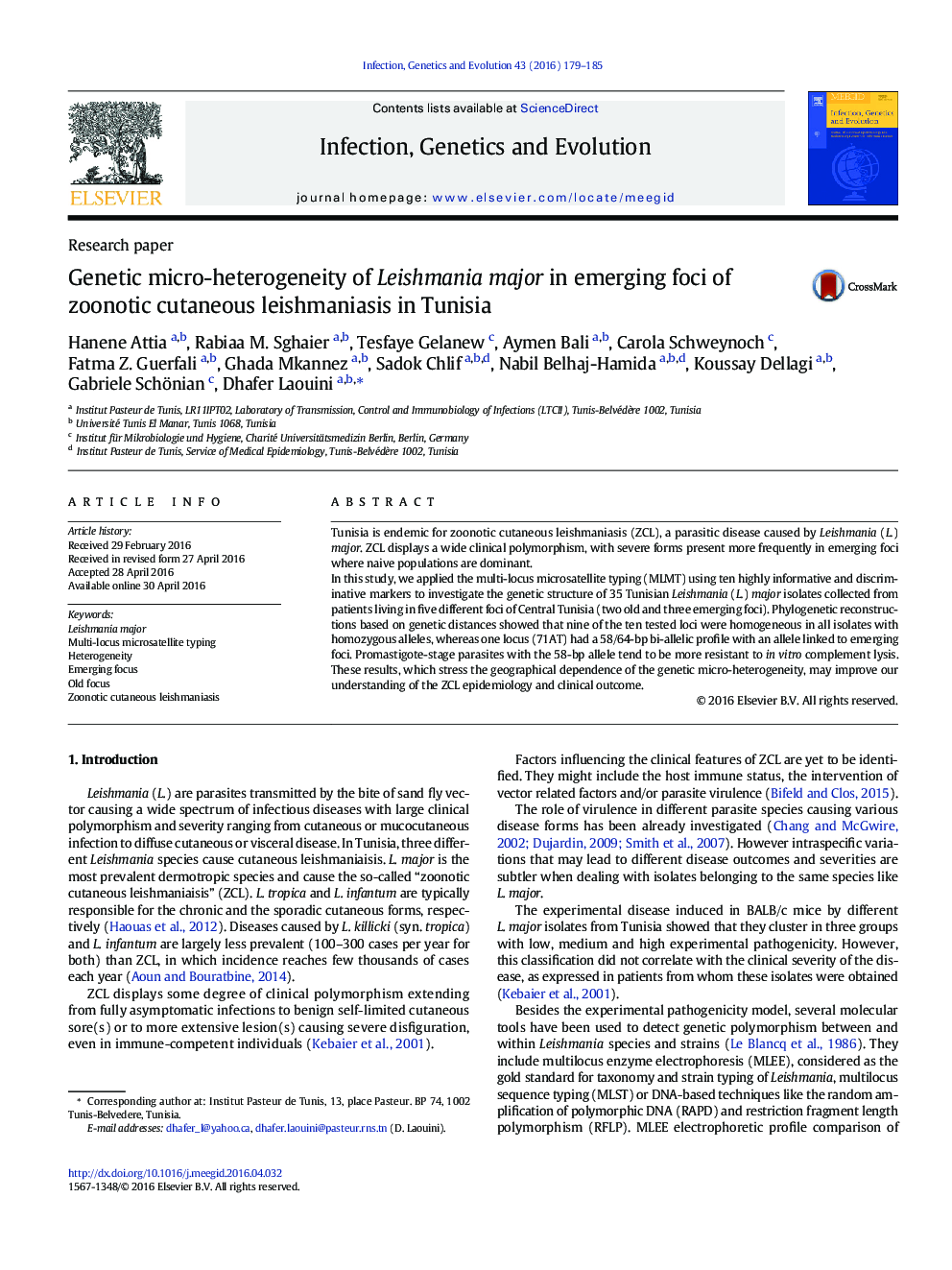| Article ID | Journal | Published Year | Pages | File Type |
|---|---|---|---|---|
| 2822955 | Infection, Genetics and Evolution | 2016 | 7 Pages |
•Genetic micro-heterogeneity was detected in L. major isolates obtained from Tunisia.•Micro-heterogeneity was only found in the new and emerging foci of the study area.•Heterozygosity of the 71AT consisted of the presence of the 58-bp and 64-bp alleles.•A slight relationship exists between 58-bp allele and resistance to complement lysis.
Tunisia is endemic for zoonotic cutaneous leishmaniasis (ZCL), a parasitic disease caused by Leishmania (L.) major. ZCL displays a wide clinical polymorphism, with severe forms present more frequently in emerging foci where naive populations are dominant.In this study, we applied the multi-locus microsatellite typing (MLMT) using ten highly informative and discriminative markers to investigate the genetic structure of 35 Tunisian Leishmania (L.) major isolates collected from patients living in five different foci of Central Tunisia (two old and three emerging foci). Phylogenetic reconstructions based on genetic distances showed that nine of the ten tested loci were homogeneous in all isolates with homozygous alleles, whereas one locus (71AT) had a 58/64-bp bi-allelic profile with an allele linked to emerging foci. Promastigote-stage parasites with the 58-bp allele tend to be more resistant to in vitro complement lysis. These results, which stress the geographical dependence of the genetic micro-heterogeneity, may improve our understanding of the ZCL epidemiology and clinical outcome.
